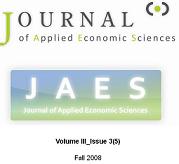ASSESSMENT OF INCOME DISTRIBUTION AND A HYPOTHETICAL FLAT TAX REFORM IN HUNGARY
ASSESSMENT OF INCOME DISTRIBUTION AND A HYPOTHETICAL FLAT TAX REFORM IN HUNGARY
Author(s): Dora Benedek, Orsolya LelkesSubject(s): Economy
Published by: RITHA Publishing
Keywords: Tax-benefit microsimulation; redistribution; flat tax reform; Hungary
Summary/Abstract: The paper presents evidence on the effects of taxes and benefits on household incomes in Hungary referring to the 2006 system and a hypothetical flat tax reform. For this, a microsimulation model is used, which is based on a matched sample of an income and a consumption survey and administrative tax records. The Hungarian budget receives more revenues from VAT than from PIT. This has major implications on equity, as while PIT is progressive, VAT is regressive, imposing a higher tax burden on low-income households. We highlight the importance of tax allowances. The absolute amount of total tax allowances tends to increase with income, and the share of allowances within total incomes is around 5-7% in all income groups, except the top fifth, where it declines. Targeting is thus inadequate, and it is especially so in case of child support. Family tax allowance reaches the bottom decile only to a limited extent. This is in sharp contrast with the universal child benefit, which is well targeted to the poorest. The second part explores the likely impact of the introduction of a flat tax, where VAT and PIT rates are set at 20%, and a tax free bracket for low incomes is kept. We show that a budget neutral solution would have a largely regressive effect, where 70% of the population would lose, with a minority on the top of the distribution gaining.
Journal: Journal of Applied Economic Sciences (JAES)
- Issue Year: III/2008
- Issue No: 03
- Page Range: 173-186
- Page Count: 15
- Language: English

